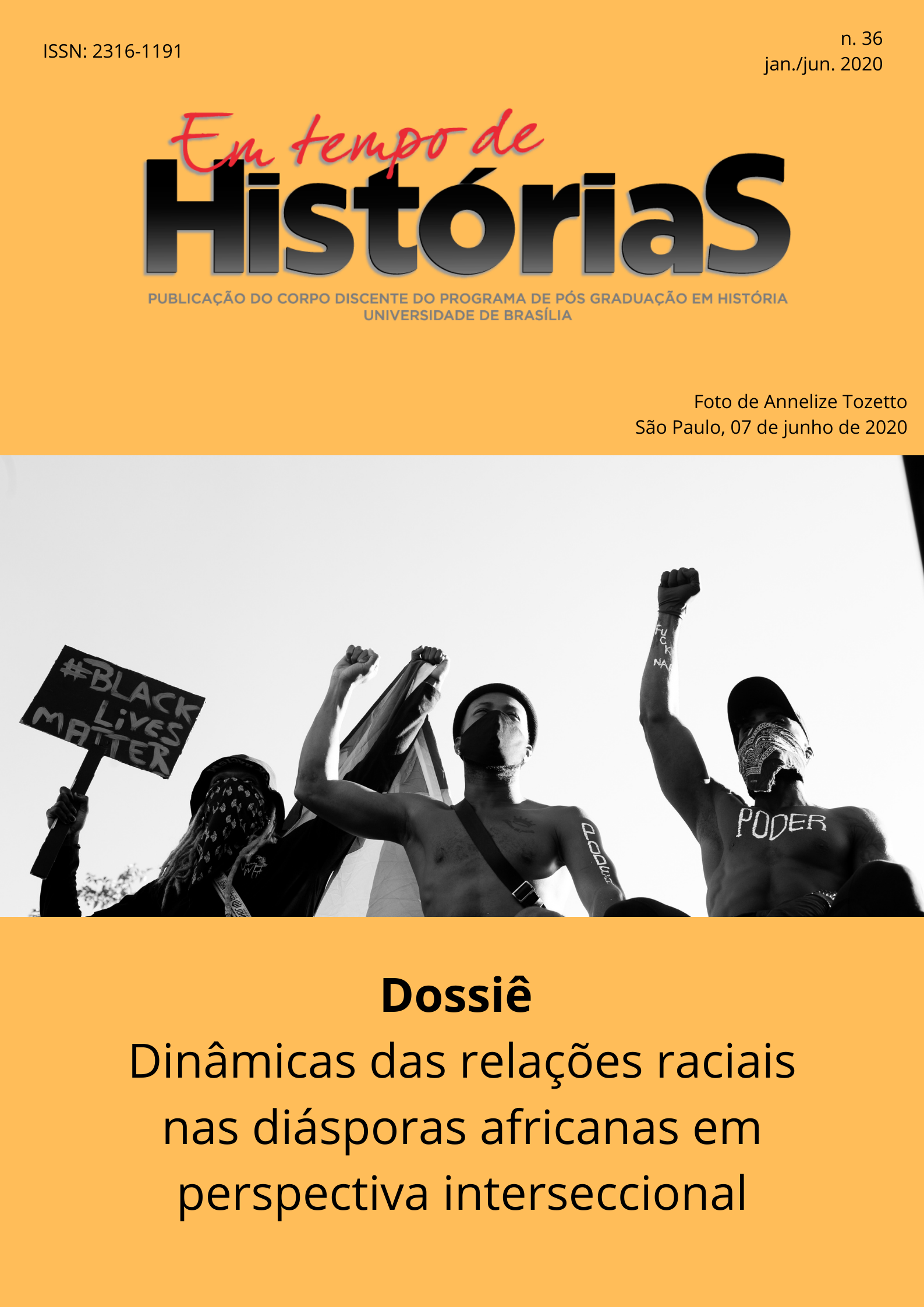Notes about the black population's erasure in the National Truth Commission's report - 2014
DOI:
https://doi.org/10.26512/emtempos.v1i36.31751Keywords:
National Truth Commission.Civil-Military Dictatorship.Black Population.Abstract
The National Truth Commission, established by Law no. 12,528 in June 2012 with the task of investigating cases of human rights violations suffered at the time of the Brazilian civil-military dictatorship (1964-1964) by implementing the "right to memory and historical truth and promoting national reconciliation. After the work finalized by the CNV, society was delivered on December 10, 2014 the final report of activities where the results presented at the end of the activities showed an erasure about the problematization of the black population in the Brazilian civil-military dictatorship, therefore due to this absence, the proposal of this article is to make visible the black and black victims who appear in the final number of deaths and disappearances by the dictatorship in the final report of the CNV addressing their profiles, professional performance, political organizations in which they participated, in addition to presenting some debates around the situation of the black population in the period.
Downloads
References
COMISSÃO, Nacional da Verdade. Relatório Final. Brasília, 2014.
COMISSÃO, Da Verdade do Estado de São Paulo “Rubens Paiva”. Verdades Abertas. São Paulo, 2015.
Artigos e Livros
DOMINGUES, P. Fios de Ariadne: o protagonismo negro no pós-abolição. Revista Anos 90, Porto Alegre, v.6, n.30, p. 215-250, 2009.
FICO, Carlos. Violência, trauma e frustração no Brasil e na Argentina: o papel do historiador. Topoi (Rio de Janeiro), v. 14, n. 27, p. 239-261, 2013.
GASPAROTTO, Alessandra. Apontamentos (e desapontamentos) em relação à criação da Comissão Nacional da Verdade no Brasil. In: PADRÓS, Enrique Serra (org.). Cone Sul em tempos de ditadura: reflexões e debates sobre a História Recente. Porto Alegre: [s. e.], 2013.
GONZALEZ, Lélia; HASENBALG, Carlos Alfredo. Lugar de negro. Editora Marco Zero, 1982.
GONZALEZ, Lélia. Racismo e Sexismo na Cultura Brasileira. Revista Ciências Sociais Hoje, Anpocs, p. 223-244, 1984.
GONZALEZ, Lélia. A juventude negra brasileira e a questão do desemprego. Rio de Janeiro: UFRJ, 1979.
GORENDER, Jacob. Combate nas trevas. 5. ed. São Paulo: Fundação Perseu Abramo: Expressão Popular, 2014.
MOORE, Carlos. Racismo e sociedade: novas bases epistemológicas para entender o racismo. ”“ Belo Horizonte, Mazza Edições, 2007.
MOURA, Clóvis. O racismo como arma de dominação. Revista Princípios. Ed. 34, Ago/Set/Out, p. 28- 38, 1994.
NASCIMENTO, Abdias. O genocídio do negro brasileiro: processo de um racismo mascarado. Editora Perspectiva SA, 2016.
NAPOLITANO, Marcos. 1964: história do regime militar brasileiro. São Paulo: Contexto, 2014.
PADROS, Enrique Serra. Terrorismo de Estado: reflexão a partir das experiências das ditaduras de Segurança Nacional. In: GALLO, Carlos Artur (org); RUBERT, Silvania (org). Entre a memória e o esquecimento: estudos sobre os 50 anos do golpe civil-militar no Brasil. Porto Alegre: Deriva, 2014, p. 13-36.
PINTO, Simone Rodrigues. Direito à memória e à verdade: comissões de verdade na América Latina. Revista Debates, v. 4, n. 1, p. 128, 2010.
REIS FILHO, Daniel Aarão; DE SÁ, Jair Ferreira. Imagens da revolução: documentos políticos das organizações clandestinas de esquerda dos anos 1961 a 1971. Marco Zero, 1985.
REIS, Daniel Aarão. 1964: golpe militar ou civil?. In: FIGUEIREDO, Luciano (org). História do Brasil para ocupados. Rio de Janeiro: Casa da Palavra, 2013, p. 197-201.
______. Ditadura e democracia no Brasil. Rio de Janeiro: Zahar, 2014.
Downloads
Published
How to Cite
Issue
Section
License
Copyright (c) 2020 Em Tempo de Histórias

This work is licensed under a Creative Commons Attribution-NonCommercial 4.0 International License.
Autores que publicam nesta revista concordam com os seguintes termos:
- Autores mantém os direitos autorais e concedem à revista o direito de primeira publicação, sendo o trabalho simultaneamente licenciado sob a Creative Commons Attribution License , licença que permite que outros remixem, adaptem e criem a partir do seu trabalho para fins não comerciais, e embora os novos trabalhos tenham de lhe atribuir o devido crédito e não possam ser usados para fins comerciais, os usuários não têm de licenciar esses trabalhos derivados sob os mesmos termos.
- Autores têm autorização para assumir contratos adicionais separadamente, para distribuição não-exclusiva da versão do trabalho publicada nesta revista (ex.: publicar em repositório institucional ou como capítulo de livro), com reconhecimento de autoria e publicação inicial nesta revista.
- Autores têm permissão e são estimulados a publicar e distribuir seu trabalho online (ex.: em repositórios institucionais ou na sua página pessoal) a qualquer ponto antes ou durante o processo editorial, já que isso pode gerar alterações produtivas, bem como aumentar o impacto e a citação do trabalho publicado (Veja O Efeito do Acesso Livre).













